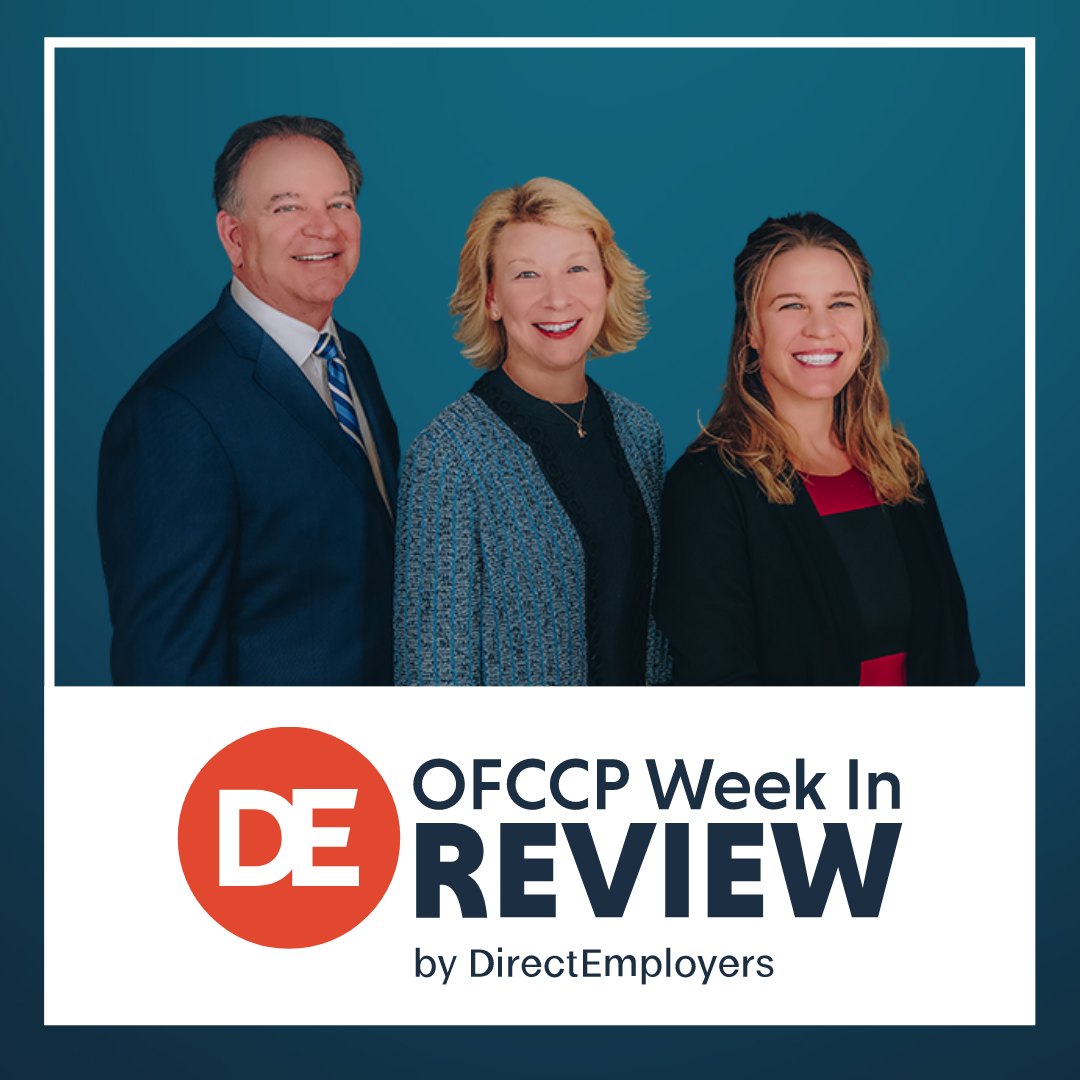
- A Federal Court in Texas Shot Down the Biden FLSA Independent Contractor Rule & Reinstated the Trump Rule
- Federal Government Exploring Non-Binary Data Collection
- Manager Alert: EEOC Slips in an Unsanctioned New “Law” on So-Called “Intersectional Discrimination” Under Guise of New Caretaker Discrimination Guidance
- New OFCCP Directive on “Pay Equity Audits” Raises More Questions Than it Answers
- Free Prevailing Wage Seminars for Federal Contractors
- OMB Finally Has a Director in A First for African Americans
- OFCCP to Host Instructional Webinar on Contractor Portal Certification Opening – March 31st
- Expired Documents No Longer Acceptable for I-9 Form
- The Comment Deadline on USDOL’s Davis-Bacon Act Proposed Rules Change Proposals is Now Set for May 17, 2022
- EARN Updated Its Federal Contractor Resource Page
- Registered Apprenticeships for Incarcerated Individuals Topped National Dialogue Ideas
- New Guidance on Website Accessibility Under the ADA
Monday, March 14, 2022: A Federal Court in Texas Shot Down the Biden FLSA Independent Contractor Rule & Reinstated the Trump Rule
HELD: Federal agencies cannot shortcut procedural requirements in the rush to change things but rather must seek comment on less disruptive alternatives when establishing new substantive policies (this is becoming an almost weekly refrain with federal courts striking down Biden Administration policy changes)
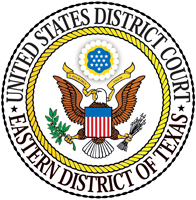
This time, the U.S. District Court for the Eastern District of Texas held the Biden Administration’s March 2021 withdrawal of the Trump Administration’s Final Rule (the “Trump Rule”) related to independent contractor classifications under the FLSA violated the Administrative Procedure Act (“APA”). As common as it is to see these cases arise in Texas, it is also becoming common to see the courts holding that the Biden Administration is routinely ignoring procedural requirements the APA imposes to make federal regulatory policy processes more relevant to the regulated community, and fairer.
The case is Coalition for Workforce Innovation, et al. v. Walsh, et al., Case No. 1:21-cv-00130 (E.D. Tx. March 14, 2022). In ruling for the plaintiff-business groups, the Court also reinstated the Trump Rule the federal (Trump) Wage and Hour Division had issued in January 2021. Because the Biden Wage-Hour Division had improperly rescinded the prior Trump Independent Contractor (“IC”) Rule, the Court held that the Trump Rule has been in effect, as a matter of law, since March 8, 2021. Should you need a refresher on its substance, we previously discussed the Trump IC Rule in a January 11, 2021 Week In Review story.
Team Biden Had Issued No Fewer Than Three Rulemakings to Withdraw the Trump Rule (propose delay; delay in fact; withdraw)
President Trump issued the Trump Rule as one of his last acts during the final days of his Presidential administration. The Trump Rule sought to alter how the FLSA determines whether an individual is either an employee or independent contractor. The Trump Rule was set to become legally effective on March 8, 2021, about 6 weeks after The Chief Justice of the United States swore Joe Biden in as the nation’s 46th President.
The Trump Rule sought to revise the FLSA’s “economic reality” test to focus on two core legal factors. The proposed Trump Rule also set out three other factors for courts to consider if the two core factors were in conflict (see substantive discussion here).
Upon assuming the presidency, President Biden’s Wage and Hour Division of the U.S. Department of Labor (“DOL”) first proposed on February 5, 2021 (after the President had been in office barely two weeks) to delay enactment of the Trump Rule (the “Proposed Delay Rule”) to May 7, 2021. The Wage and Hour Division thereafter published on March 4, 2021 a Final Rule to in fact delay the Trump Rule (the “Final Delay Rule”) to become legally effective on May 7, 2021 (as per the Proposed Delay Rule). Then, the Wage and Hour Division finally clinched and issued on April 30, 2021 a Final Rule to withdraw (“the “Withdrawal Rule”) the Trump Rule as of May 5, 2021 (previously discussed here).
The Withdrawal Rule had the effect of leaving in place the Obama Administration’s definition of the term Independent Contractor.
The New Case Decision
As anticipated, business groups immediately sued seeking to overturn both of the Biden Administration’s Final Delay Rule and Withdrawal Rule. Coalition for Workforce Innovation, et al. was one of the first cases challenging the Biden Administration’s actions, as a business group representing gig-economy companies filed the action in March 2021. Business groups representing builders, financial services firms, and contractors subsequently joined the litigation as additional plaintiffs.
Challenging the Biden Administration’s actions as arbitrary and capricious, as well as invalid under the APA, plaintiffs sought to overturn both the Final Delay Rule and the Withdrawal Rule. The Biden Administration’s defense championed three arguments:
- no Notice and Comment period was required for the Final Delay Rule because it was only an “interpretive” (and not substantive) policy decision by USDOL;
- even if a Notice and Comment period were required, the notice and comment period of 19 days was permissible under the APA’s “good cause” exception; and
- both the Final Delay Rule and the Withdrawal Rule were reasonable and did not constitute arbitrary and capricious actions by the DOL.
Finding that the Biden Administration did violate the APA when promulgating both the Final Delay Rule and the Withdrawal Rule, Judge Marcia A. Crone (a George W. Bush appointee) drew these conclusions of law:
- The Final Delay Rule violated the APA because that statute required the Wage and Hour Administration to undergo a formal “Notice and Comment” period pursuant to the APA. First, the Court held that the Final Delay Rule was not an interpretive action, but rather was a substantive rulemaking because it altered the effective date of a duly promulgated standard. The Final Delay Rule was thus tantamount to an amendment or rescission of the Trump Rule. Second, the Court held that the Final Delay Rule required Notice and Comment for a second independent reason: since it amended a “legislative rule,” as the Trump Rule would have affected existing individual rights and itself went through the appropriate formal Notice and Comment process the APA requires. The Court then reasoned that the APA required the Biden Administration to use the same procedures to amend or repeal the Trump Rule as the Trump Administration had used to issue it.
- The Court also found that the Biden Final Delay Rule had provided a truncated and limited Notice and Comment process which was insufficient to satisfy the APA’s requirements. First, providing only19 days for the public to comment and to only permit comments about the proposed delay in the effective date of the Trump Rule was insufficient to constitute a “meaningful opportunity for notice and comment.” Nor did the Biden Administration establish the existence of any “serious and imminent harm” that would have created “good cause” for such a brief period of time for the public to comment.
- Further, the Court held that the Final Delay Rule also violated the APA by becoming effective immediately without “good cause” which was otherwise needed for the Final Delay Rule to become effective immediately.
- Finally, the Court held that the Biden Administration’s Withdrawal of the Trump Rule was arbitrary and capricious in violation of the APA because the Withdrawal failed to consider alternatives to rescission of the Trump Rule. First, the DOL went so far as to prohibit any comment from the public of potential alternatives to rescission. Second, given the inconsistent standards related to determining employment status under the FLSA, the decision to withdraw implementation of a new test under the Trump Rule was ripe for discussion of alternative proposals to bring uniformity to the question of independent contractor status. Specifically, the court held “agency action is arbitrary and capricious when it considers only the binary choice of whether to retain or rescind a policy, without also ‘considering less disruptive alternatives.’”
Not Necessarily Good News for Businesses If Team Biden Rallies Back
As a result of the court’s decision, the Trump Rule is now in effect to determine independent contractor status under the FLSA. However, before employers celebrate this broadening of the independent contractor definition and make wholesale changes to their employment structures, two notes of caution should give employers pause. First, given that this new ruling came out of a very “anti-Biden” judicial forum, you may expect to see the Biden Administration appeal the holding. This could result in a future stay of the Trump Rule, or further litigation turmoil before the Trump Rule is completely safe from legal attack in the courts.
Second, and most importantly, perhaps recognizing the judicial obstacles in the Biden Administration’s way, nothing in the court decision precludes the Biden Administration from now implementing new regulatory action that changes the Trump Rule more favorably to workers. Indeed, the court’s ruling provides the Biden Administration with a handy “roadmap” for compliance with the APA and its Notice and Comment requirement to institute a new standard that amends or alters the Trump Rule and achieves the Biden Administration’s stated goals. Thus, even though the Trump Rule is currently in effect, employers should be cautious and consider this “reprieve” potentially only temporary in nature until the Biden Wage and Hour Division implements a harsher Proposed and Final Rule, but one which complies with the APA.
Thus, employers interested to convert workers to independent contractor status, if legally permissible to now do so pursuant to the Trump Rule, should:
- assess now, while they can, who may qualify as independent contractors and immediately convert those individuals to IC status;
- for the next couple of years, while the Biden Administration is still in office and can potentially change the independent contractor rule, have the infrastructure in place to ensure a quick and easy transition to employment for those independent contractors who may fail any new Rule the Biden Wage and Hour Division may issue on the rebound from the devastating case decision we report today.
Monday, March 14, 2022: Federal Government Exploring Non-Binary Data Collection

“EEOC spokesperson Christine Nazer confirmed that the agency is weighing nonbinary data collection. She said in an email that employers can voluntarily report data to the agency in the “comment” section of their EEO-1 forms.”
The comment section was a hastily contrived response to our Blog on the “Non-Binary Dilemma” (see below) which had pointed out that federal government reporting had failed to define “gender” and had failed to keep up with the multiple genders employers were seeing in their applicant pools and workforces. The Office of Federal Contract Compliance Programs (OFCCP) recently weighed in on this topic as well. OFCCP is exploring methods for voluntary self-identification of non-binary genders. See our story from November 2021, “Renewed Call for Transgender Rights and Dignity as Deaths Due to Protected Status Rise to Deadliest Year on Record.”
On A Related Note
One of our most sought out blogs continues to be from July of 2019 (and updated in November of 2019), “The “Non-Binary” Dilemma: Federal Gender Reporting When “Male” & “Female” Are No Longer the Only Realities in the Workplace.”
Mark Your Calendars
Listen to previous DE Disability (last year) and DE Legal (this year) Masterclass Roundtables in the DE Academy.
Monday, March 14, 2022: Manager Alert: EEOC Slips in an Unsanctioned New “Law” on So-Called “Intersectional Discrimination” Under Guise of New Caretaker Discrimination Guidance

- Title VII of the Civil Rights Act of 1964 (Title VII),
- Titles I and V of the Americans with Disabilities Act of 1990 (ADA),
- Sections 501 and 505 of the Rehabilitation Act of 1973 (Rehabilitation Act), or
- other EEOC-enforced laws.
Regardless of whether this is properly approved Commission policy, there is nothing new here, other than a side-adventure (discussed below) implicitly recognizing, without comment, so-called “inter-sectional” discrimination (in which two protected statuses are said to be necessary to combine together to create the protected class: i.e., “African-American Women,” even though there is no discrimination either against “African-Americans” or “Women.” The Commission could have issued this same guidance as to carpenters, or airplane mechanics or secretaries and it would equally be true and applicable. Said another way, there is nothing here which is unique to the classification of the employee as a “caregiver,” although it is a good punch list of intentionally discriminatory actions not to undertake at point of hire (other than the off-topic discussion of “intersectional discrimination.”
It is important to note that a “caregiver” is not a protected class. However, a caregiver may be a member of a protected class (because pregnant, or a man, etc.), and discrimination based on a protected class can be unlawful. It is also important to understand that few courts have found “inter-sectional” discrimination claims to be justiciable under Title VII which makes unlawful only those actions “based on” “race,” “sex,” “gender,” etc.….and not based on “race and sex.”
It is also important to understand that this “caregiver” guidance does not apply to the vast majority of caregivers in the United States. Title VII does not extend to companies with fewer than fifteen employees and only in those companies which in addition affect “inter-state commerce.” (Most caretakers in the U.S. still work independently or through small “Mom and Pop” companies of 3 or 4 employees and not through corporate agencies. However, that work architecture is changing throughout the U.S. as home care for wealthy and aging “Baby Boomers” is booming). Likewise, ADA jurisdiction starts with the 15th employee (and the company must affect inter-state commerce). Age act (Age Discrimination in Employment Act) extends to companies with twenty employees or more and must affect inter-state commerce. (But see state law discussion, below.)
The EEOC’s guidance starts with this explanation:
Q #1. When does discrimination against applicants or employees with caregiving responsibilities violate federal employment discrimination laws?
- Caregiver discrimination violates federal employment discrimination laws when it is based on an applicant’s or employee’s sex (including pregnancy, sexual orientation, or gender identity), race, color, religion, national origin, age (40 or older), disability, or genetic information (such as family medical history).
- Caregiver discrimination also is unlawful if it is based on an applicant’s or employee’s association with an individual with a disability, within the meaning of the ADA, or on the race, ethnicity, or other protected characteristic of the individual for whom care is provided.
- Finally, caregiver discrimination violates these laws if it is based on intersections among these characteristics (for example, discrimination against Black female caregivers based on racial and gender stereotypes, or discrimination against Christian female caregivers based on religious and gender stereotypes).
The additional Q&As cover examples of unlawful discrimination of caregivers based on gender, LGBTQI+, pregnancy, disability, national origin, and an intersection of protected classes. Other items addressed include harassment, retaliation, accommodations, and job performance.
What About State or Local Laws?
This is a crucial factor that employers should investigate. For example:
Q #5. Do employees have a right under federal employment discrimination laws to reasonable accommodations such as telework, flexible schedules, or reduced travel or overtime because they are caregivers?
- In general, no. The laws enforced by the EEOC do not provide employees with a right to accommodations to handle caregiving duties. However, employees who are unable to perform their job duties because of pregnancy, childbirth, or related medical conditions must be treated the same as other employees who are temporarily unable to perform job duties.
- In addition, employees with caregiving responsibilities may have rights under other laws, such as the right to leave for covered caregiving purposes under the [federal] Family and Medical Leave Act [“FMLA”] which the U.S. Department of Labor enforces, or under similar state or local laws. Employers also may choose to provide such accommodations to employees at their discretion, as long as they do so in a nondiscriminatory manner.
Note: The federal FMLA applies only to employers with fifty or more employees within seventy-five miles and to employees who have worked at least 1250 hours in the prior 12 months.
Note: In some states, like California, you could become an “employer” covered by the state’s anti-discrimination statutes when hiring a single caretaker (not employed at a company with 15 or more employees) to take care of one of your parents in their home since California law asserts jurisdiction over persons or companies which hire only one “employee” (which often leads into the Independent Contractor discussion in California).
Related Resources From EEOC
- Enforcement Guidance: Unlawful Disparate Treatment of Workers with Caregiving Responsibilities
- Q&A to the above guidance
- Employer Best Practices for Workers with Caregiving Responsibilities
Tuesday, March 15, 2022: New OFCCP Directive on “Pay Equity Audits” Raises More Questions Than it Answers
Directive Also Acknowledges That “Occupation Segregation,” Not Pay Discrimination Alone, is a “driver of persistent pay disparities”
IMPORTANT: This Blog identifies four “Confusions” (and four Resolutions of those Confusions) springing from OFCCP’s new Compensation Directive 2022-01, and also includes one “Happy Observation.”
We present this blog in two parts. The second half will run next week along with the Monday, March 28, 2022, DE Week In Review.
Part I (containing discussion of the first three “Confusions”)
Confusion #1: OFCCP’s new Directive (DIR) 2022-01 “Subject: Pay Equity Audits” and its accompanying Press Release do not agree on who the audience is. A writer’s first rule is to know the audience to which s/he is writing.
The Press Release says the Directive is written for contractors (which is entirely possible since OFCCP Directives “may provide guidance …to federal contractors”) in these words: OFCCP
“…issued a new directive to promote greater contractor attention (emphases added) concerning the proactive and effective use of pay equity audits to identify barriers to equal pay in their pay-setting and employment practices.”
The Directive, however, is aimed at OFCCP and says:
“PURPOSE: To provide guidance on how OFCCP will evaluate federal contractor’s compliance with pay equity audit obligations and clarify OFCCP’s authority to access and review pay equity audits conducted pursuant to 41 CFR 60-2.17(b)(3).”
The Directive also sets out perfunctory generalized role instructions for various levels of OFCCP employees even while the Directive seems written for the contractor audience.
And, if this new Directive is not aimed at OFCCP, how will OFCCP Compliance Officers (“COs”) know to undertake the new audit procedural changes it calls for? This is important since OFCCP Directives are the OFCCP Director’s method of communication to instruct all her employees as to how to proceed on any particular issue. So, if this new Directive is not an instruction to OFCCP Compliance Officers, federal contractors do not know yet, in fact, what OFCCP is instructing COs to do, when and how.
Possible Resolution Of The Confusion: While I cannot be sure who OFCCP thought it was addressing in the new Directive, and OFCCP addresses most Directives to its employees (since Directives are the OFCCP Director’s primary communication tool to instruct her employees), the totality of the two documents taken together suggest OFCCP meant to write to contractors. That leaves the contractor community now to wonder exactly what instructions Compliance Officers have gotten, or will get, behind the scenes. Those instruction(s)/training materials to OFCCP COs become even more important as we now reach the second confusion.
Tuesday, March 15, 2022: Free Prevailing Wage Seminars for Federal Contractors
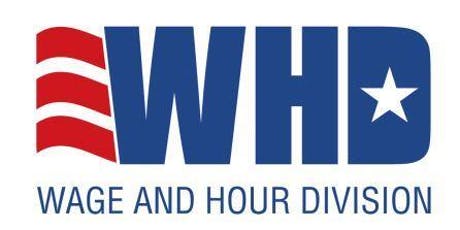
The Wage and Hour Division of the U.S. Department of Labor will provide registrants with access to pre-recorded training webinars covering the Davis-Bacon and related Acts and the McNamara-O’Hara Service Contract Act. Live question and answer sessions are then available through September.
Prevailing Wage Seminars
Davis-Bacon Act compliance Q&A sessions:
- March 29th
- June 14th
- September 13th
McNamara-O’Hara Service Contract Act compliance Q&A sessions:
- March 30th
- June 15th
- September 14th
The seminars are free; however, registration is required.
Tuesday, March 15, 2022: OMB Finally Has a Director in A First for African Americans

Director Young has been Acting Director since March of 2021, when the Senate confirmed her to the Deputy Director role. She also previously served as Clerk and Staff Director for the House Appropriations Committee. Young started her career as a Presidential Management Fellow at the National Institutes of Health. She is a graduate of Loyola University in New Orleans and holds a Master of Health Administration Degree from Tulane University.
“Shalanda is a proven leader and a master of the federal budget process who, over the course of her extensive career as a trusted aide and widely respected staff director on the Appropriations Committee, has helped shape many of the solutions to some of the most pressing problems facing working families.”
~ House Committee on Appropriations Chair Rosa DeLauro
Thursday, March 17, 2022: OFCCP to Host Instructional Webinar on Contractor Portal Certification Opening – March 31st

Webinar Details
- Date: March 31, 2022
- Time: 2:00 p.m. EDT
- To Attend: Register online
Agenda
- An overview of the OFCCP Contractor Portal
- A demonstration of how a company may certify compliance through the OFCCP Contractor Portal
- A question & answer session
How We Got Here
This one is a doozy…we reported on February 8, 2022, “OFCCP Published How-To Videos and Registration Tips for New Contractor Portal.” However, the complete history, including links to all previous Contractor Portal stories are in our report from February 1, 2022, “OFCCP Contractor Portal Opened for Registration – See Rules of Behavior to Enter.”
Friday, March 18, 2022: Expired Documents No Longer Acceptable for I-9 Form

DHS adopted the temporary policy in response to the difficulties many individuals experienced when seeking to renew documents during the COVID-19 pandemic. Now that document-issuing authorities have reopened and/or provided alternatives to in-person renewals, DHS will end this flexibility.
Starting May 1, 2022, employers must only accept unexpired List B documents.
See the announcement for direction on employees whose I-9 Form was completed during the May 1, 2020 – April 30, 2022 time period, with an expired List B document.
Friday, March 18, 2022: The Comment Deadline on USDOL’s Davis-Bacon Act Proposed Rules Change Proposals is Now Set for May 17, 2022

This week brings this news:
You may find the now formally published proposed Rule in the Federal Register here: Notice of Proposed Rulemaking.
Submit comments on or before May 17, 2022.
Friday, March 18, 2022: EARN Updated Its Federal Contractor Resource Page
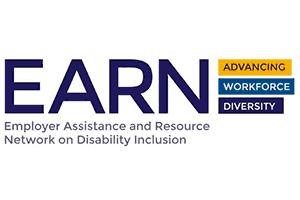
Topics include:
- Who is a Federal Contractor?
- Disability-Related Requirements
- Self-Identification of Employees with Disabilities
- Finding Job Candidates with Disabilities
Friday, March 18, 2022: Registered Apprenticeships for Incarcerated Individuals Topped National Dialogue Ideas
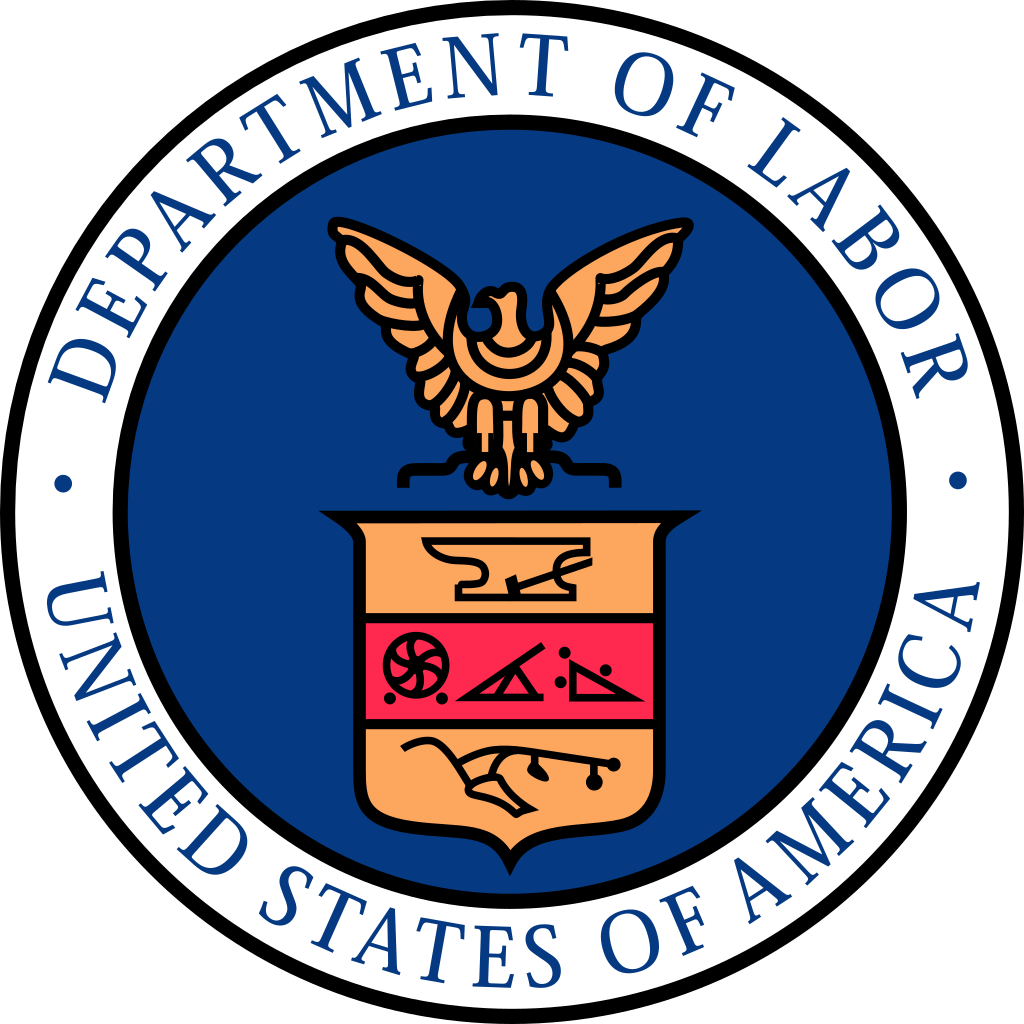
The 30-page Report outlines the dialogue topics, a participant summary, and an analysis of the online contributions. The Agency ranked the most active, and most popular ideas based on vote totals. The top idea by vote (and also the most active by way of views, comments, and followers) was “apprenticeships for incarcerated individuals,” followed by the most popular idea, “use of screen readers to test the accessibility of your communication.”
(This report mirrors the experience of DE’s Recruit Rooster which is experiencing higher volumes of interest in the last year for its services which test the electronic accessibility of corporate websites and electronic communication systems).
One of the more unique ideas was “registered apprenticeship – a conversation at the dinner table.” Comments expanding on this topic included:
- “I would like to see Registered Apprenticeship as a Topic on Sesame Street. Starting to share the idea of earning and learning at the beginning of a person’s lifelong learning.”
- “I would like to see more “Montessori” style education put in our public education system.”
- “I would like to see Middle School and High Schools work with area companies who have RAP programs. One way they could do that is to utilize their school monitors that share information on upcoming events, to also show RAP opportunities.”
Review and Analysis of Online Dialogue Contributions
Friday, March 18, 2022: New Guidance on Website Accessibility Under the ADA

Topics include:
- Why Website Accessibility Matters
- Examples of Website Accessibility Barriers
- When the ADA Requires Web Content to be Accessible
- How to Make Web Content Accessible to People with Disabilities
- Web Accessibility for People with Disabilities is a Priority for the Department of Justice
- Resources
When does the ADA REQUIRE Web Content to be Accessible?
The Americans with Disabilities Act applies to state and local governments (Title II) and businesses open to the public (Title III). Title II of the ADA prohibits discrimination against people with disabilities in all state and local governments’ services, programs, and activities.
A website with inaccessible features can limit the ability of people with disabilities to access a public entity’s programs, services, and activities available through that website -for example, online registration for classes at a community college.
“For these reasons, the Department has consistently taken the position that the ADA’s requirements apply to all the services, programs, or activities of state and local governments, including those offered on the web.”
Editor’s Note: Accessibility to blind and vision-impaired visitors to the Internet remains an open legal question. However, we believe the current weight of the case law interprets the ADA to require covered entities to provide websites and other electronic displays to be accessible to blind and vision-impaired Internet visitors and employees.
Title III prohibits discrimination against people with disabilities by businesses open to the public (also referred to as “public accommodations” under the ADA). The ADA requires that businesses open to the public provide full and equal enjoyment of their goods, services, facilities, privileges, advantages, or accommodations to people with disabilities.
A website with inaccessible features can limit the ability of people with disabilities to access a public accommodation’s goods, services, and privileges available through that website – for example, a veterans’ service organization event registration form.
“For these reasons, the Department has consistently taken the position that the ADA’s requirements apply to all the goods, services, privileges, or activities offered by public accommodations, including those offered on the web.”
Recent Legal Cases
The guidance also reviews recent enforcement actions under Title II and Title III.
“We have heard the calls from the public on the need for more guidance on web accessibility, particularly as our economy and society become increasingly digitized. This guidance will assist the public in understanding how to ensure that websites are accessible to people with disabilities. People with disabilities deserve to have an equal opportunity to access the services, goods and programs provided by government and businesses, including when offered or communicated through websites,” said Assistant Attorney General Kristen Clarke for the Justice Department’s Civil Rights Division.
THIS COLUMN IS MEANT TO ASSIST IN A GENERAL UNDERSTANDING OF THE CURRENT LAW AND PRACTICE RELATING TO OFCCP. IT IS NOT TO BE REGARDED AS LEGAL ADVICE. COMPANIES OR INDIVIDUALS WITH PARTICULAR QUESTIONS SHOULD SEEK ADVICE OF COUNSEL.
SUBSCRIBE.
Compliance Alerts
Compliance Tips
Week In Review (WIR)
Subscribe to receive alerts, news and updates on all things related to OFCCP compliance as it applies to federal contractors.
OFCCP Compliance Text Alerts
Get OFCCP compliance alerts on your cell phone. Text the word compliance to 55678 and confirm your subscription. Provider message and data rates may apply.



